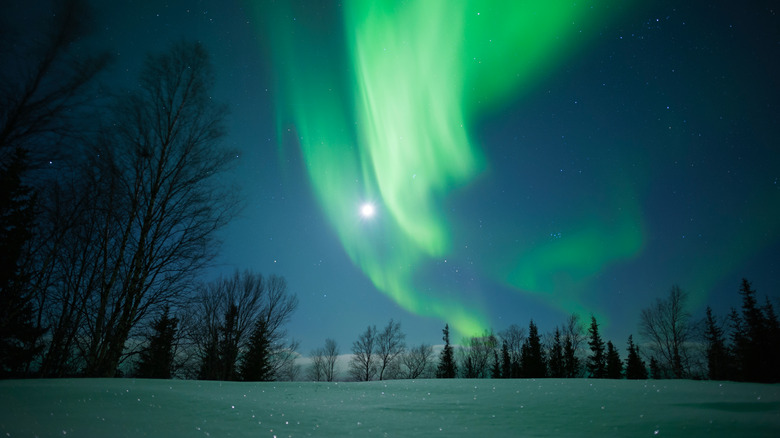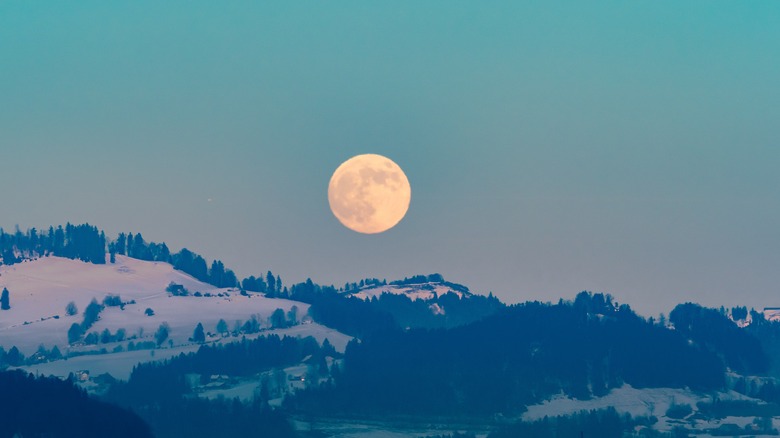What Causes Glowing Snow In The Arctic?
Arctic researchers in the remote north have occasionally noticed a strange sight in the snows around their field stations: glowing blue lights. The phenomenon has been compared to Christmas lights, or like the appearance of a smartphone dropped in the snow banks, per National Geographic. In late 2021, researchers in the Russian Arctic found a surprising explanation for the eerie spectacle: bioluminescent sea creatures, swept far away from home on powerful currents.
After spotting the glowing snow during a walk with a pair of dogs one night, biologist Vera Emelianenko put a sample of the stuff under her microscope. She spotted several copepods — tiny shellfish barely bigger than a grain of sand — that glowed blue when she prodded them.
Copepods, a type of zooplankton, are the most numerous form of life in oceans today. Metridia longa, the species of copepod that Emelianenko found in the snow, glows from carrying luciferin, a compound that produces light when mixed with oxygen, according to Discovery. They may use this as a tactic to startle predators.
The strongest moon of the year
Copepods don't actively swim — they travel simply by being pushed around by currents, which follow predictable patterns. Metridia longa would not usually be close to shore in the White Sea, the body of water that surrounds the Russian Arctic. So how did they get on land in the Arctic Circle?
According to National Geographic, scientists spotted the plankton in December, around the time when the moon was at its closest perigee (that is, distance from Earth). This would have resulted in a stronger than usual tide, one that potentially washed the hardy creatures into snow they couldn't escape from.
But this is only one explanation for the glowing snow, which has been spotted in other Arctic snows as well. Jørgen Berge, a professor at the Arctic University of Norway, told National Geographic that he believes bioluminescent algae known as dinoflagellates might better explain the phenomenon.

